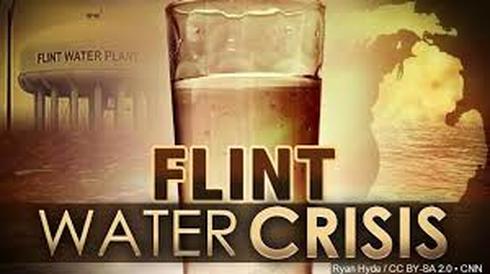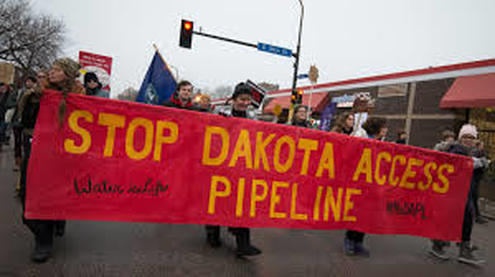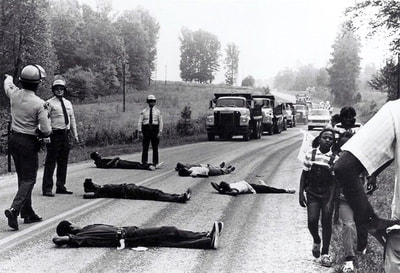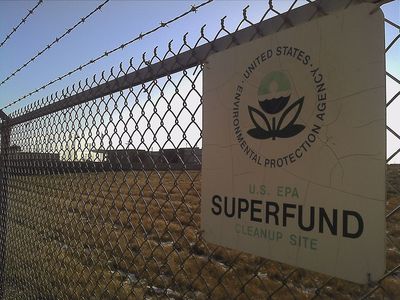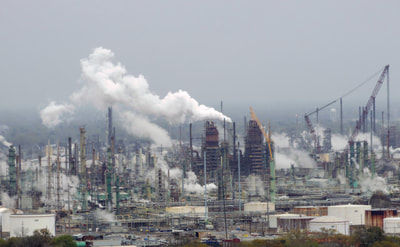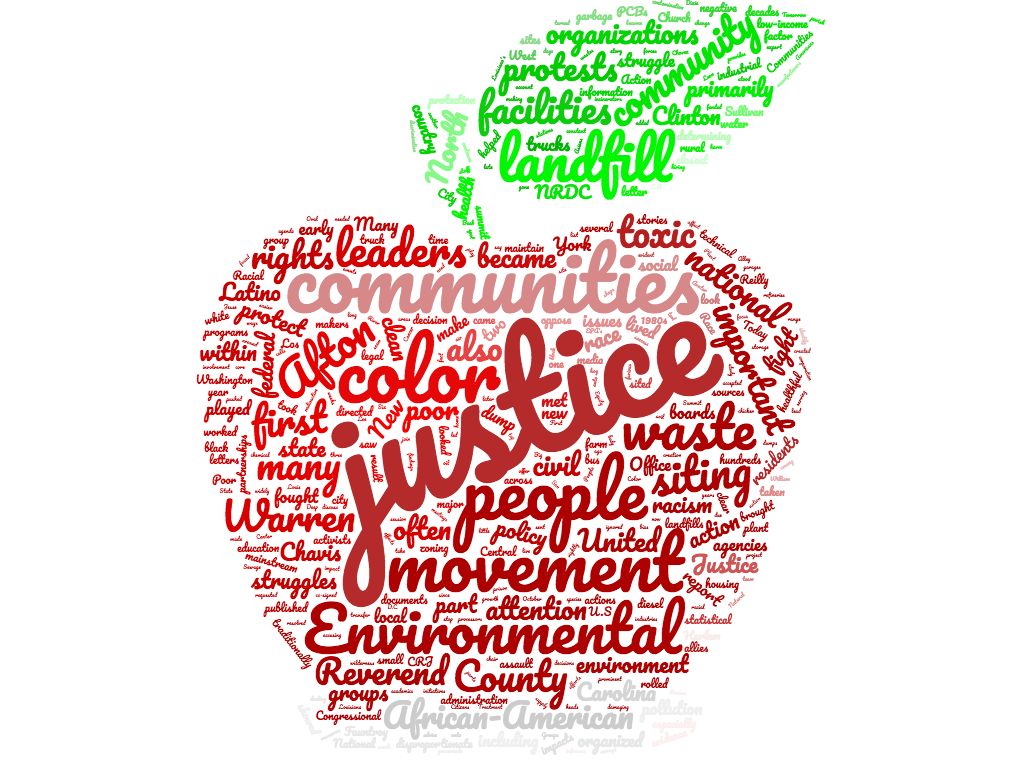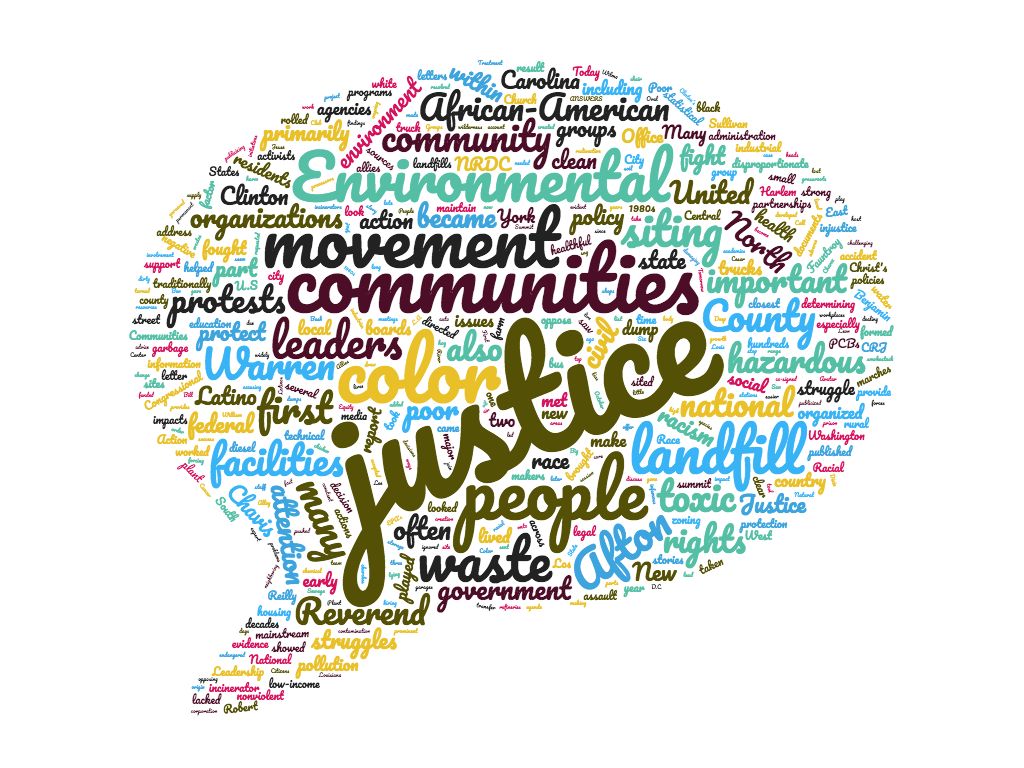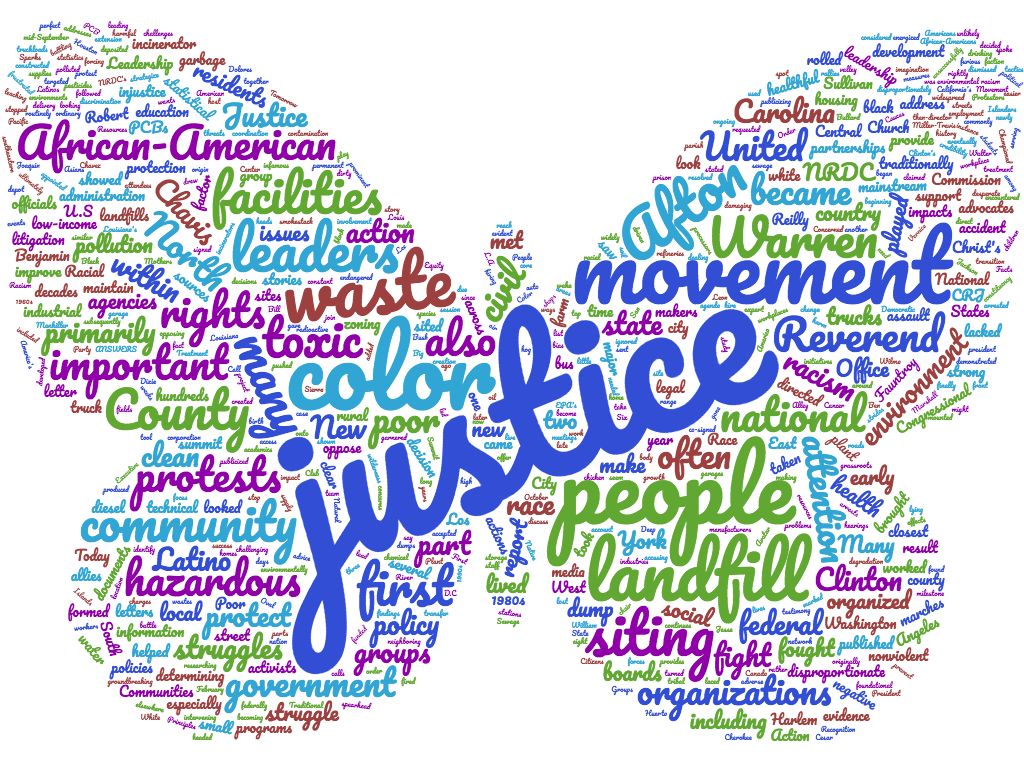Environmental Racism
As early as 1987 the United Church of Christ Study (UCC, 1987) found race to be the most significant factor associated with the location of uncontrolled hazardous waste sites. In 2007, Toxic Wastes and Race at Twenty, a follow up study to the UCC study, indicated little change had been made ((Ministries, Bullard, Mohai, Saha, & Wright, 2007). We now know from extensive research that marginalized people and communities (primarily African American, Latinx, or Native American) are disproportionately exposed to toxins, poor air quality, hazardous waste sites, and workplace safety (Haluza-DeLay, 2012). This phenomena has come to be known as environmental racism, or environmental inequality. Other forms of social inequality intersect with environmental racism such as socioeconomic status, and gender. Women may be more vulnerable to environmental risks such as chemical toxins, especially during pregnancies and men may be more susceptible to occupational safety environmental hazards in the workplace. Children and the elderly are two of the most vulnerable populations to environmental risks. To sum up:
“Environmental injustice occurs when the most vulnerable, poor, minority or underserved populations carry the greatest burden of environmental risk by living in “undesirable” areas” (Russ A. (Ed.), 2015).
“Environmental injustice occurs when the most vulnerable, poor, minority or underserved populations carry the greatest burden of environmental risk by living in “undesirable” areas” (Russ A. (Ed.), 2015).
EPA and Environmental Justice
According to the US Environmental Protection Agency (EPA) environmental justice is defined as, “the fair treatment and meaningful involvement of all people regardless of race, color, national origin, or income with respect to the development, implementation, and enforcement of environmental laws, regulations, and policies” (US EPA, 2014). The office of Environmental Equity at the EPA was established in 1992; in 1994 the name changed to the Office of Environmental Justice (OEJ) and a small grants program was established. Since its start, the small grants program has awarded more than $24 million in funding to over 1400 community-based organizations, and local and tribal organizations working with communities facing environmental justice issues. In 2010 Environmental Justice became an agency-wide priority and the EPA released Plan EJ in 2014 as a roadmap to assist the EPA in integrating environmental justice into all its programs. In 2016, the EPA released the Final Framework for EJ 2020 Action Agenda. The action agenda begins with four key current areas: lead, drinking water, air quality, and hazardous waste sites. Anticipated future focus areas of concern include pesticide impacts on farmworkers, commercial transportation of freight, water infrastructure, air pollution and climate change (US EPA, 2016). See EPA Environmental Justice Timeline for a fuller picture of EPA environmental justice activities.
Historical Cases of Environmental RAcism
Standing Rock and Flint have been prominent in the news, but they are not unusual or stand-alone cases. Most cases of environmental racism rarely make the headlines. Have you heard of Triana, Alabama (1978) or Emelle, Alabama. (1980s), Chester, Pennsylvania. (1980s), Warren County, North Carolina (1982), West Dallas, Texas (1993), Uniontown, Alabama. (2008), Kettleman City, California (2010)? I hadn’t, although almost 40 years later I clearly remember Love Canal where buried toxic waste was discovered under an elementary school in a working class neighborhood of Niagara Falls, NY. It led to a health disaster there that sparked the passage of the Comprehensive Environmental Response, Compensation, and Liability Act (CERCLA),better known as the Superfund Act of 1978. What’s the difference between Love Canal and Triana, AL or Warren County, NC? The residents of the first were predominantly white, while those of the latter were African American (Taylor, 2014). Click for links to more information
First Let's |
Now let's WORK“We all need the same things: clean air and clean water. We have a lot of work to do, but if we can combine our strengths, we can fight for what’s right.”
—Jake Edwards, Onondaga |
IT'S UP TO USNever doubt that a small group of thoughtful, committed citizens can change the world; indeed, it is the only thing that ever has.
--Margaret Mead (1901-1978) |
Science Teacher Ecojustice Toolkit
